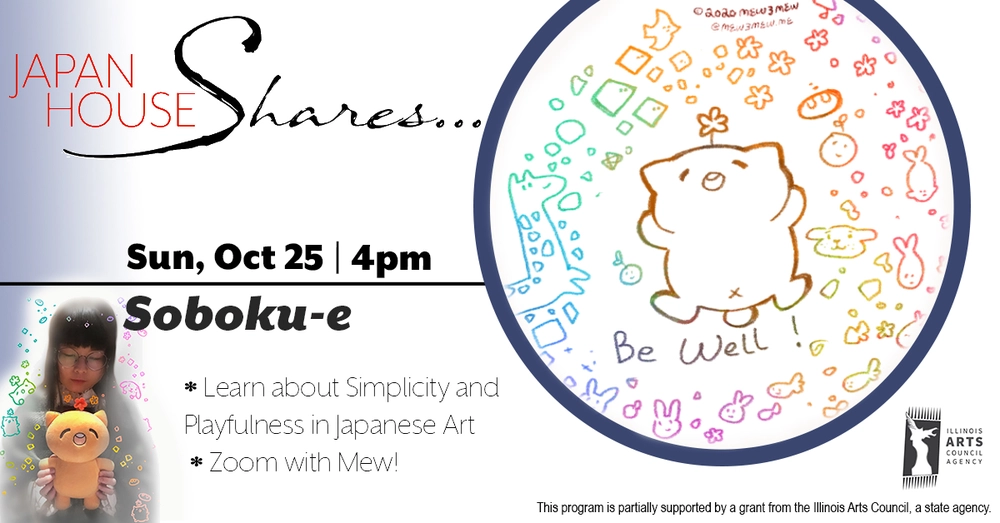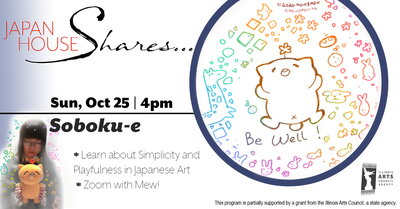
Link to watch: https://youtu.be/pTVmE9OkxzA
Join us Sunday, October 25 at 4 pm as we present our next in the Japan House Shares series, Soboku-e. Exhibitions of kawaii, or “cute” artworks are common in Japan’s museums and art galleries. Many of these paintings and drawings are hundreds of years old, yet even today they look modern. Soboku-e is not a common word and it was probably made up to represent a style of art that embodies a naive, simple, no-frills, and/or idyllic point of view. Soboku-e is often referred to as “Innocent Paintings” and originated in the countryside of Japan where everyday objects were created for practical use yet represent some of the purest forms of Japanese aesthetics. Artist Mew Lingjun Jiang will guide us through the history of this unique art form with a variety of examples showcasing the broad range of styles and materials, but all with the same straightforward purpose to tell a story, convey a message, and communicate with their viewers without sophisticated rhetoric. Mew seamlessness intertwines their own art with that of the often-unknown masters, encouraging all of us to pick up pen and paper to create our own soboku-e. With a few simple strokes, some encouragement, and an understanding that there is no “good or bad”, we can delight ourselves with little drawings that can transform our daily life, exposing our existence and mindfulness at the moment.
“Mew” Lingjun Jiang is a Japanese art historian, currently interning at the University of Chicago and working as a freelance artist. Mew interned at Japan House when doing a BFA degree at the University of Illinois at Urbana-Champaign. Mew then received an MA degree from the University of Chicago in 2020. Experienced with research and curation projects in China, Japan, and the U.S., Mew now studies Japanese playing card designs. Japanese visual culture has inspired Mew’s art practices that explore subjects of mental health, loneliness, and imaginary friends.
